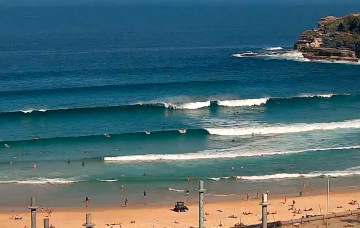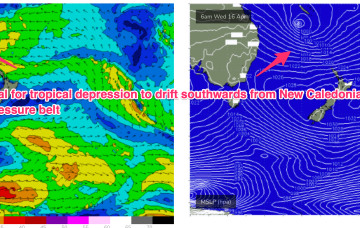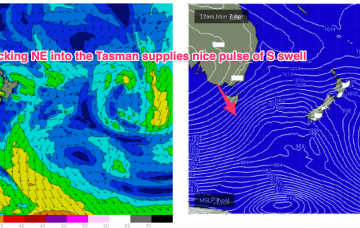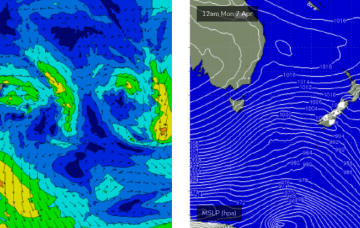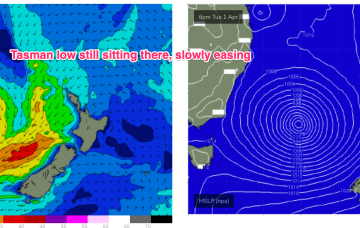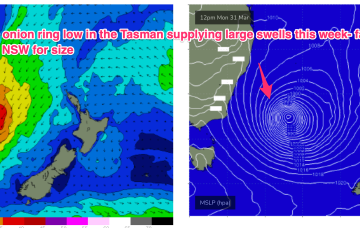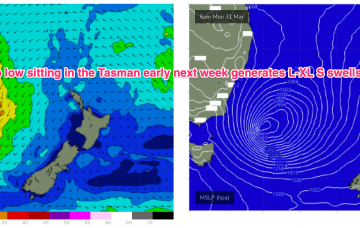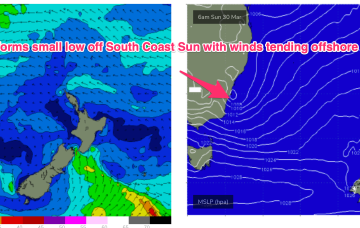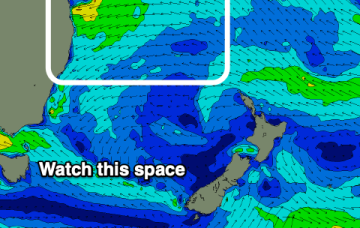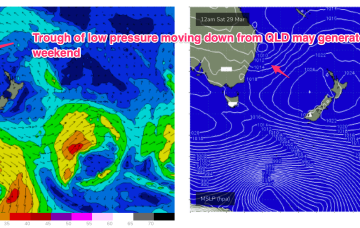It's a bit of a tricky weekend of waves, but the short version is there should be something fun and it’ll be clean on top.
Primary tabs
High pressure is moving into the Tasman, strengthening as it drifts towards New Zealand, where it is expected to become a dominant “flat topped” feature, reinforced by subsequent high pressure moving into the Tasman. We’ll see a long E’ly fetch develop through the South Pacific slot through the end of this week, enhanced by a trough of low pressure near New Caledonia which is attached to a still active monsoon trough.
A front passes into the Tasman overnight and robust fetch of SW gales is trailing behind, currently sweeping NE past the SE coast of Tasmania.
Monday and Tuesday will almost mirror the weekend’s swell pattern, with generally light winds and sea breezes expected both days - so better conditions on the balance.
We’ll see the low meander towards the South Island for the remainder of the week, with large swells on the ease across Southern/Central NSW, much less size into the sub-tropics.
We have a powerful swell generating pattern in place with a deep low (993hPa) in the Tasman, supported by a large high (1033hPa) well to the south of the Bight.
We’re now looking at a very significant S swell early next week as a deep low sits off the South or Gippsland Coast with severe gales to storm force winds aimed into the proximate southern swell window. Concurrently, another Ross Sea ice shelf fetch will be peaking or just post-peak as a massive deep low forms NE of the Ross Sea on the weekend and develops storm force winds.
It’s likely we will see remnants of the inland monsoon low approach the SEQLD/NSW Coast during the weekend, dragging a moist NE flow down from the tropics and creating a mini black nor-easter event.
This is a tricky, low confidence event so I’d be reluctant to pack the car overnight for a pre-dawn mission - but it’ll be well worth keeping an eye on things.
Tues offers some potential with models picking up some long period S/SE groundswell generated by a slow moving polar low around the edge of the Antarctic ice shelf in the vicinity of the Ross Sea.


